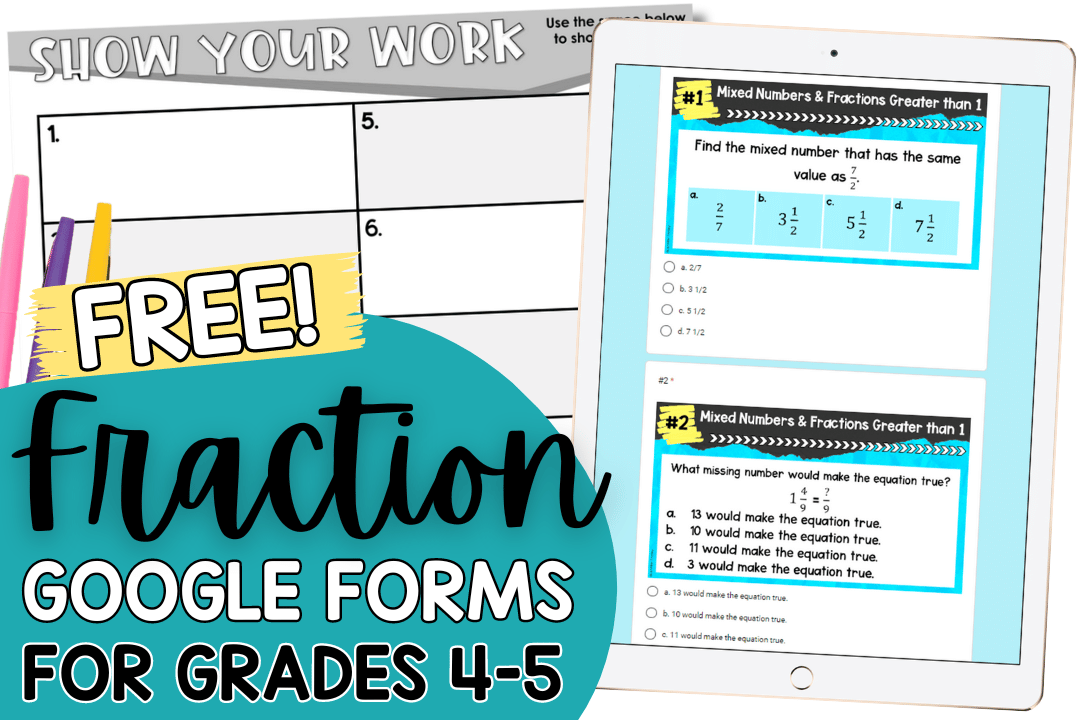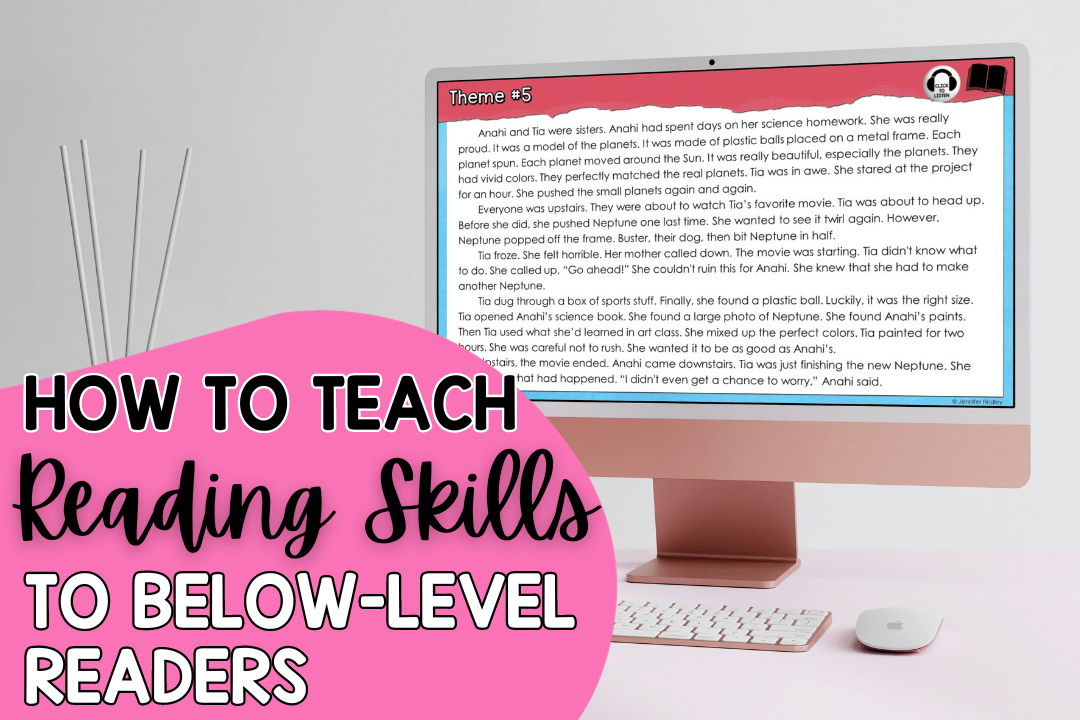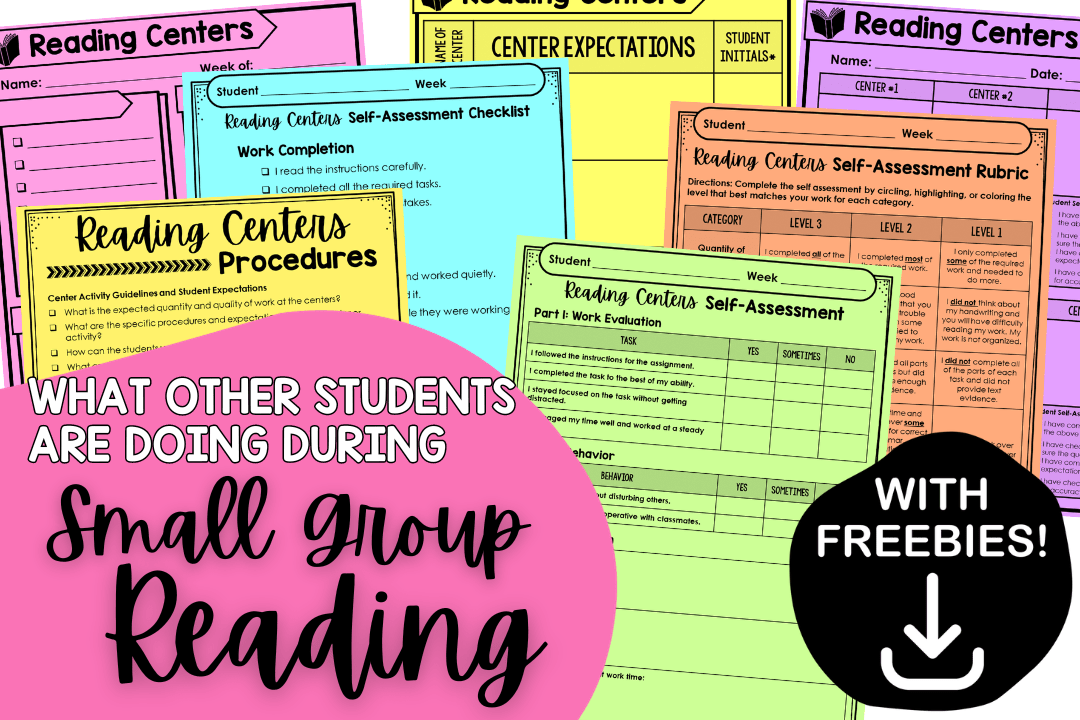Are you looking for ways to spice up your classroom routine? Are you ready to try something new? Then this post is sure to give you the inspiration to make your classroom a more innovative, student-centered space.
More than likely you are already doing one or more of these strategies to a certain extent. I would venture to say you have at least heard of all of them, but if you are looking to expand your classroom horizons give this list a scan. At the bottom of the post, you can find your own free brainstorming sheet for ways to include these strategies in your classroom.
Growth Mindset
 Growth mindset is in direct contradiction to a fixed mindset. Someone with a fixed mindset believes intelligence and ability are stagnant, while someone with a growth mindset believes they can continue to reach for goals and accomplishments they have not mastered yet.
Growth mindset is in direct contradiction to a fixed mindset. Someone with a fixed mindset believes intelligence and ability are stagnant, while someone with a growth mindset believes they can continue to reach for goals and accomplishments they have not mastered yet.
Can you see why growth mindset is so popular with teachers?
To encourage a growth mindset in your students, show them how to work towards small attainable goals. This allows them to feel success and continue working towards larger goals. While they are working towards these goals focus your praise on their effort and hard work, not the outcome. Students need to know failure happens, and is only one step along the way to success. Work with students to understand how learning works. This metacognition is a powerful tool for students to find how they learn best and set themselves up for success.
Gamification
Gamification in the classroom works best when students are working to solve a problem, but gamifying your classroom does not have to be complicated. In fact, in many cases, gamification makes prep easier.
An easy way to gamify an assignment would be to assign points to different categories and have students work to earn a certain number of points to complete the assignment. This allows for students choice and ups the engagement ante.
I would caution against any gamification which pits the students against their teacher like me v. the class tally charts which pop up in classrooms. You want students on your team, not working against you.
For more ideas on gamification, check out this post for how I use it during test prep.
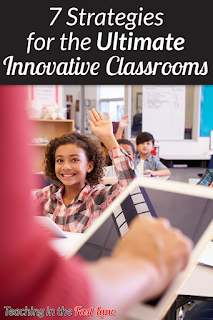 STEAM
STEAM
There are abundant resources out there for following a STEAM framework. My personal favorite is Steam Powered Classroom.
Stations
What has changed about stations is how content rich they are. I remember being in second grade and playing file folder math matching games. When I started teaching, the room I took over had the same file folder stations I had used as a student more than a decade before.
Station work is great for using during small group remediation and enrichment time because they allow a student driven pace and focus. Stations are easy to differentiate among your students and allow partners to scaffold learning for one another acting as another teacher.
Stations can be found for every subject and every level, and because of this, they have lasting power. To check out my math stations which are built to support practicing individual standards in multiple ways click here.
Cooperative Learning
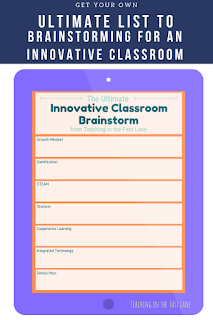 Cooperative learning is a style of teaching taking the teacher off the stage and allows students to learn from one another. Students work together in collaborative groups through different strategies to reach a common goal. This positive interdependence allows students to hold one another accountable for sharing the work load and learning. The group nature of cooperative learning strategies allows many student-to-student interactions to occur at the same time instead of one interaction at a time which happens when teachers call on a student. To see cooperative learning activities in action is every teacher’s dream!
Cooperative learning is a style of teaching taking the teacher off the stage and allows students to learn from one another. Students work together in collaborative groups through different strategies to reach a common goal. This positive interdependence allows students to hold one another accountable for sharing the work load and learning. The group nature of cooperative learning strategies allows many student-to-student interactions to occur at the same time instead of one interaction at a time which happens when teachers call on a student. To see cooperative learning activities in action is every teacher’s dream!
Cooperative learning is better than competitive learning at increasing student engagement and building relationships in the classroom. It is this positive interdependence that makes cooperative learning strategies so unbelievably powerful.
For more on cooperative learning check out this post.
Integrated Technology
Careers that have been around for decades are changing rapidly due to the influx of technology in the workforce. In order for our students to be career and college ready they need to be immersed in technology.
This comes with a few caveats though. The first being our students are digital natives. They likely know way more about the apps and tech in our classrooms than we do, and they aren’t afraid to let us know. Another is even the careers we have today won’t be around by the time our students graduate, so instead of asking them what they want to be, it is more apt to ask them what kinds of problems they want to solve. Finally, because you can include technology in a lesson doesn’t mean you should.
I see so many teachers struggling to integrate technology into EVERY lesson, and why? Why not take a more traditional approach to some things and then include technology where it fits and students can expand their experience?
The SAMR model is a great place to start is you are struggling to decide how to integrate technology in your classroom. While substitution is a great place to start, we should all be striving to use technology to redefine how we are learning.
Genius Hour
Students decide what they want to learn about as well as what their learning goal is. For one student this might mean creating their own line of greeting cards for kids who became an older brother or sister recently. Another student may have an interest in how different materials affect the environment. Both of these passion projects are ripe with learning opportunities students follow through with while the teacher acts as a facilitator and consultant.

Genius Hour has its roots at Google where they provide time for each of their employees to follow their own passion projects for about 20% of their time at work. The guiding principle is those allowed to follow their passions will be more invested and happier in their work environment. The same goes for our classrooms.
Read on at Teach Thought for the 6 Principles of Genius Hour and to get started in your classroom.
What Now?
Get Your FREE Brainstorming Page Here!

Get ready to harness your passions and brainstorm ways to innovate in your classroom!
We won’t send you spam. We promise! Powered by ConvertKit
/* Layout */
.ck_form {
/* divider image */
background: #fff url(data:image/gif;base64,R0lGODlhAQADAIABAMzMzP///yH/C1hNUCBEYXRhWE1QPD94cGFja2V0IGJlZ2luPSLvu78iIGlkPSJXNU0wTXBDZWhpSHpyZVN6TlRjemtjOWQiPz4gPHg6eG1wbWV0YSB4bWxuczp4PSJhZG9iZTpuczptZXRhLyIgeDp4bXB0az0iQWRvYmUgWE1QIENvcmUgNS41LWMwMTQgNzkuMTUxNDgxLCAyMDEzLzAzLzEzLTEyOjA5OjE1ICAgICAgICAiPiA8cmRmOlJERiB4bWxuczpyZGY9Imh0dHA6Ly93d3cudzMub3JnLzE5OTkvMDIvMjItcmRmLXN5bnRheC1ucyMiPiA8cmRmOkRlc2NyaXB0aW9uIHJkZjphYm91dD0iIiB4bWxuczp4bXA9Imh0dHA6Ly9ucy5hZG9iZS5jb20veGFwLzEuMC8iIHhtbG5zOnhtcE1NPSJodHRwOi8vbnMuYWRvYmUuY29tL3hhcC8xLjAvbW0vIiB4bWxuczpzdFJlZj0iaHR0cDovL25zLmFkb2JlLmNvbS94YXAvMS4wL3NUeXBlL1Jlc291cmNlUmVmIyIgeG1wOkNyZWF0b3JUb29sPSJBZG9iZSBQaG90b3Nob3AgQ0MgKE1hY2ludG9zaCkiIHhtcE1NOkluc3RhbmNlSUQ9InhtcC5paWQ6MUQ5NjM5RjgxQUVEMTFFNEJBQTdGNTQwMjc5MTZDOTciIHhtcE1NOkRvY3VtZW50SUQ9InhtcC5kaWQ6MUQ5NjM5RjkxQUVEMTFFNEJBQTdGNTQwMjc5MTZDOTciPiA8eG1wTU06RGVyaXZlZEZyb20gc3RSZWY6aW5zdGFuY2VJRD0ieG1wLmlpZDoxRDk2MzlGNjFBRUQxMUU0QkFBN0Y1NDAyNzkxNkM5NyIgc3RSZWY6ZG9jdW1lbnRJRD0ieG1wLmRpZDoxRDk2MzlGNzFBRUQxMUU0QkFBN0Y1NDAyNzkxNkM5NyIvPiA8L3JkZjpEZXNjcmlwdGlvbj4gPC9yZGY6UkRGPiA8L3g6eG1wbWV0YT4gPD94cGFja2V0IGVuZD0iciI/PgH//v38+/r5+Pf29fTz8vHw7+7t7Ovq6ejn5uXk4+Lh4N/e3dzb2tnY19bV1NPS0dDPzs3My8rJyMfGxcTDwsHAv769vLu6ubi3trW0s7KxsK+urayrqqmop6alpKOioaCfnp2cm5qZmJeWlZSTkpGQj46NjIuKiYiHhoWEg4KBgH9+fXx7enl4d3Z1dHNycXBvbm1sa2ppaGdmZWRjYmFgX15dXFtaWVhXVlVUU1JRUE9OTUxLSklIR0ZFRENCQUA/Pj08Ozo5ODc2NTQzMjEwLy4tLCsqKSgnJiUkIyIhIB8eHRwbGhkYFxYVFBMSERAPDg0MCwoJCAcGBQQDAgEAACH5BAEAAAEALAAAAAABAAMAAAICRFIAOw==) repeat-y center top;
font-family: “Helvetica Neue”, Helvetica, Arial, Verdana, sans-serif;
line-height: 1.5em;
overflow: hidden;
color: #666;
font-size: 16px;
border-top: solid 20px #3071b0;
border-top-color: #3071b0;
border-bottom: solid 10px #3d3d3d;
border-bottom-color: #1d446a;
-webkit-box-shadow: 0px 0px 5px rgba(0,0,0,.3);
-moz-box-shadow: 0px 0px 5px rgba(0,0,0,.3);
box-shadow: 0px 0px 5px rgba(0,0,0,.3);
clear: both;
margin: 20px 0px;
}
.ck_form, .ck_form * {
-webkit-box-sizing: border-box;
-moz-box-sizing: border-box;
box-sizing: border-box;
}
#ck_subscribe_form {
clear: both;
}
/* Element Queries — uses JS */
.ck_form_content, .ck_form_fields {
width: 50%;
float: left;
padding: 5%;
}
.ck_form.ck_horizontal {
}
.ck_form_content {
border-bottom: none;
}
.ck_form.ck_vertical {
background: #fff;
}
.ck_vertical .ck_form_content, .ck_vertical .ck_form_fields {
padding: 10%;
width: 100%;
float: none;
}
.ck_vertical .ck_form_content {
border-bottom: 1px dotted #aaa;
overflow: hidden;
}
/* Trigger the vertical layout with media queries as well */
@media all and (max-width: 499px) {
.ck_form {
background: #fff;
}
.ck_form_content, .ck_form_fields {
padding: 10%;
width: 100%;
float: none;
}
.ck_form_content {
border-bottom: 1px dotted #aaa;
}
}
/* Content */
.ck_form_content h3 {
margin: 0px 0px 15px;
font-size: 24px;
padding: 0px;
}
.ck_form_content p {
font-size: 14px;
}
.ck_image {
float: left;
margin-right: 5px;
}
/* Form fields */
.ck_errorArea {
display: none;
}
#ck_success_msg {
padding: 10px 10px 0px;
border: solid 1px #ddd;
background: #eee;
}
.ck_label {
font-size: 14px;
font-weight: bold;
}
.ck_form input[type=”text”], .ck_form input[type=”email”] {
font-size: 14px;
padding: 10px 8px;
width: 100%;
border: 1px solid #d6d6d6; /* stroke */
-moz-border-radius: 4px;
-webkit-border-radius: 4px;
border-radius: 4px; /* border radius */
background-color: #f8f7f7; /* layer fill content */
margin-bottom: 5px;
height: auto;
}
.ck_form input[type=”text”]:focus, .ck_form input[type=”email”]:focus {
outline: none;
border-color: #aaa;
}
.ck_checkbox {
padding: 10px 0px 10px 20px;
display: block;
clear: both;
}
.ck_checkbox input.optIn {
margin-left: -20px;
margin-top: 0;
}
.ck_form .ck_opt_in_prompt {
margin-left: 4px;
}
.ck_form .ck_opt_in_prompt p {
display: inline;
}
.ck_form .ck_subscribe_button {
width: 100%;
color: #fff;
margin: 10px 0px 0px;
padding: 10px 0px;
font-size: 18px;
background: #0d6db8;
-moz-border-radius: 4px;
-webkit-border-radius: 4px;
border-radius: 4px; /* border radius */
cursor: pointer;
border: none;
text-shadow: none;
}
.ck_form .ck_guarantee {
color: #626262;
font-size: 12px;
text-align: center;
padding: 5px 0px;
display: block;
}
.ck_form .ck_powered_by {
display: block;
color: #aaa;
}
.ck_form .ck_powered_by:hover {
display: block;
color: #444;
}
.ck_converted_content {
display: none;
padding: 5%;
background: #fff;
}
/* v6 */
.ck_form_v6 #ck_success_msg {
padding: 0px 10px;
}
@media all and (max-width: 403px) {
.ck_form_v6.ck_modal .ck_close_link {
top: 30px;
}
}
@media all and (min-width: 404px) and (max-width: 499px) {
.ck_form_v6.ck_modal .ck_close_link {
top: 57px;
}
}

